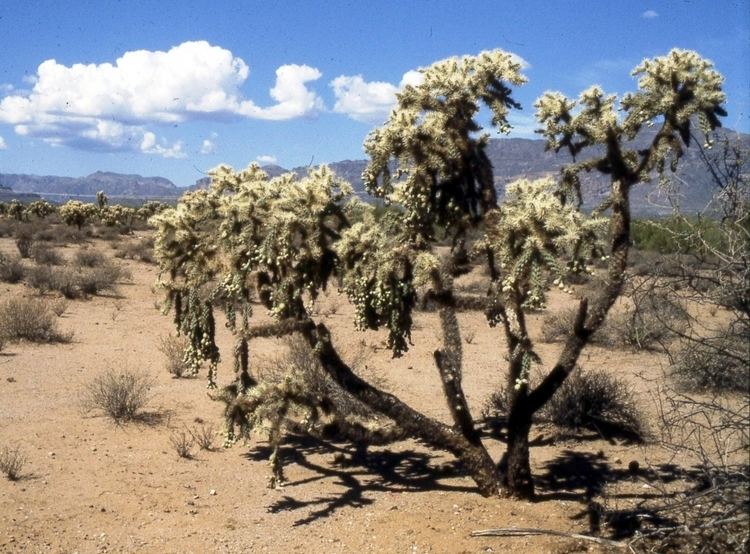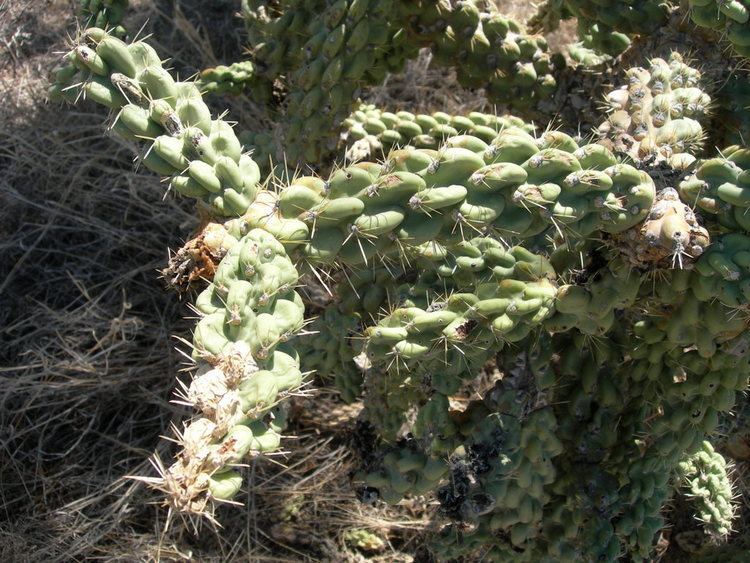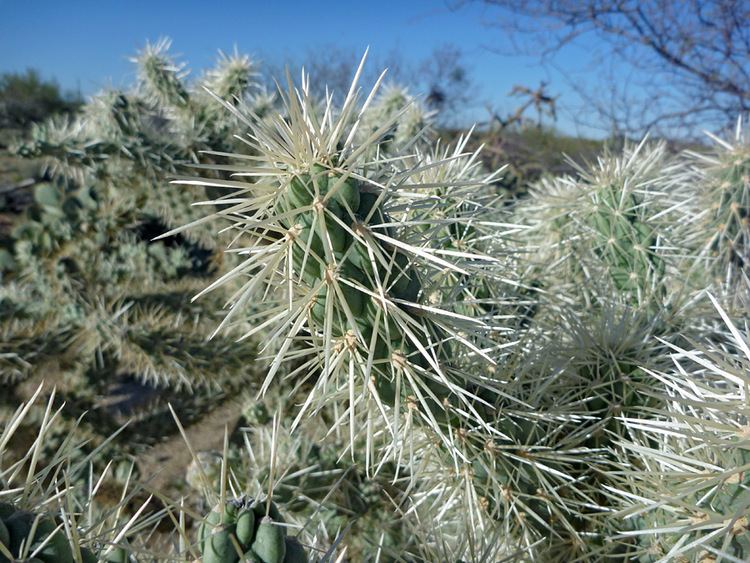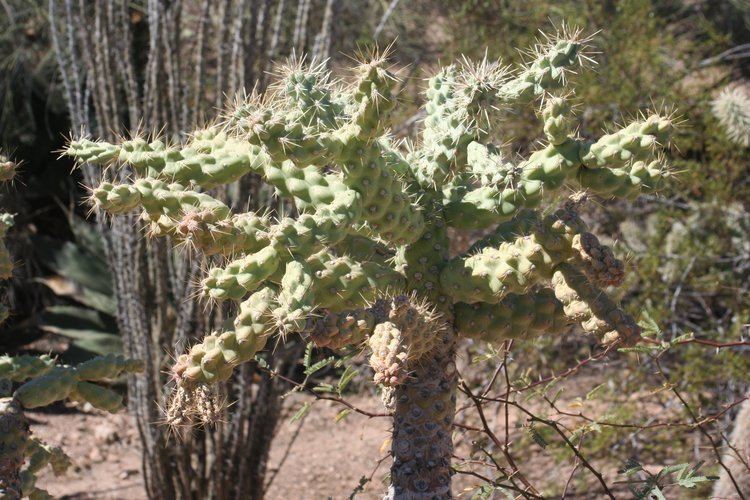Family Cactaceae Rank Species | Genus Cylindropuntia Higher classification Cylindropuntia | |
 | ||
Similar Cylindropuntia, Cactus, Cylindropuntia bigelovii, Cylindropuntia spinosior, Cylindropuntia leptocaulis | ||
Cylindropuntia fulgida
Cylindropuntia fulgida, the jumping cholla, also known as the hanging chain cholla, is a cholla cactus native to the Southwestern United States and Sonora.
Contents
Distribution

The greatest range of the jumping cholla is the entire of Sonora, except the Sierra Madre Occidental cordillera on the east and northeast; the range stops 100 mi north of the Sinaloa border on the south, and it is not found in the northwest in the Gran Desierto de Altar. It does occur on the islands in the Gulf of California, including the major islands of Tiburon and Isla Ángel de la Guarda.

In the Southwestern United States, the range extends into the Colorado Desert of California, and in Arizona. There it occurs south and southwest of the Arizona transition zone of the Mogollon Rim; in the northwest-central Sonoran Desert of Arizona, it is in a few selected locales. It also reaches into the northeast section of the Mojave Desert in southern Nevada and Utah, and in the very southern section of the Great Basin Desert of southern Utah. It also occurs just south of the east-west section of the Bill Williams River, east of the Colorado River in the Yuma Desert.
Description

Cylindropuntia fulgida grows at elevations ranging from 300 to 1,000 m (980 to 3,280 ft). While the name "jumping cholla" is applied especially to this species, it is also used as a general term for all chollas.

The jumping cholla is an arborescent (tree-like) plant with one low-branching trunk. It often grows to heights of 4 m (13 ft), with drooping branches of chained fruit. The stems are light green and are strongly tuberculate, with tubercles (small, wart-like projections on the stems) measuring 6 to 9 mm. Together, the plants form fantastic looking forests that may range over many hectares.

Leaves have been reduced to spines, 6 to 12 of which grow from each areole. Young branches are covered with 2 to 3 cm (1 to 1 in) silvery-yellow spines, which darken to a gray color with age. These spines form a dense layer that obscures the stems. Slower growing or older branches have sparse and/or shorter spines. As the spines fall off of older parts, the brown-black bark is revealed. It becomes rough and scaly with age.
Flowers are white and pink, streaked with lavender. They are about one inch wide, and are displayed at the joint tips (or old fruit tips), blooming in mid-summer.
Most of the fleshy, green fruits are sterile, pear-shaped to nearly round, wrinkled with a few spines. They are typically about 4 cm (1.5 in) long, often producing flowers the following year which add new fruits to those of previous seasons. It is these hanging chains of fruit which give it the name "hanging chain cholla".
Name
The "jumping cholla" name comes from the ease with which the stems detach when brushed. Often the merest touch will leave a person with bits of cactus hanging on their clothes to be discovered later when either sitting or leaning on them. The ground around a mature plant will often be covered with dead stems, and young plants are started from stems that have fallen from the adult. They attach themselves to desert animals and are dispersed for short distances.
Other names for this cactus include chain fruit cholla, cholla brincadora, and velas de coyote.
Wildlife
During droughts, animals like the bighorn sheep rely on the juicy fruit for food and water. Because they grow in inaccessible and hostile places of the desert, populations of this cactus are stable.
